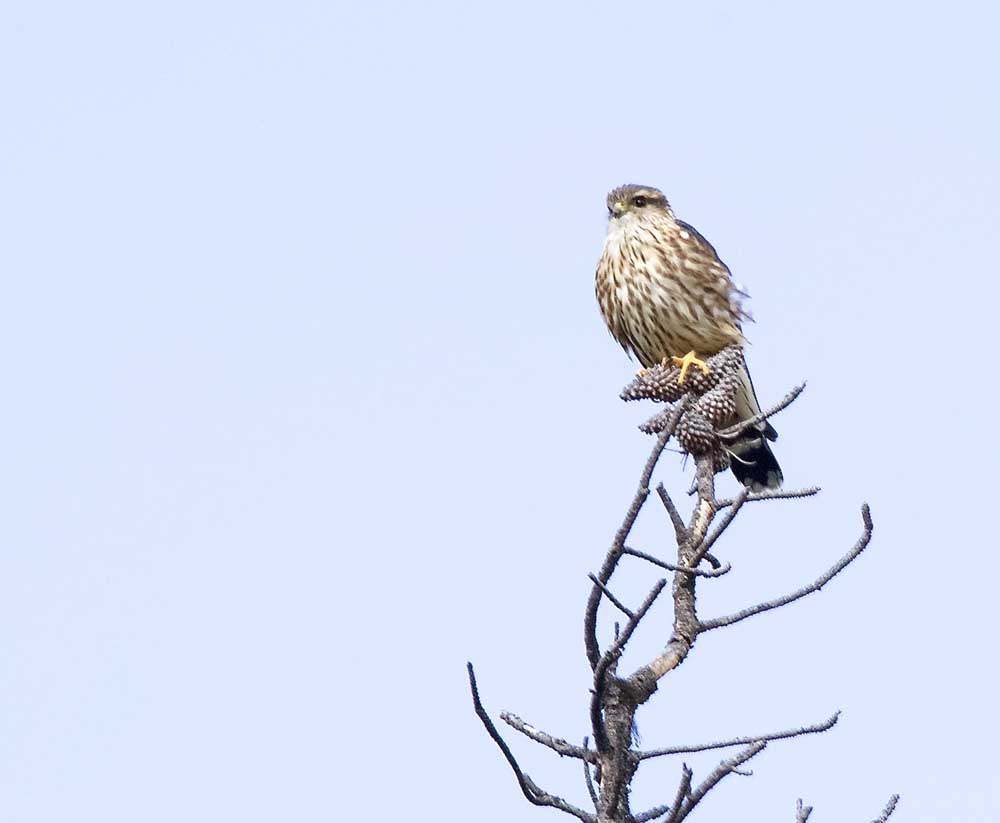Birding: The world of falcons
Published 10:36 am Monday, August 1, 2022

- The merlin is a small, fast-flying falcon. Like other falcons it uses its long, thin, toes to grab small birds in mid-air. It has a preference for snagging small birds such as sparrows in mid-air. At ten inches in size it is slightly larger than the American kestrel by about one inch.
Last week we looked at the world of hawks, vultures, eagles, and their relatives. This week’s focus is on falcons which are also birds of prey. We see three species of falcon on the Long Beach Peninsula. They are the American kestrel, merlin, and peregrine falcon. All three are designated as uncommon, which means present but not always seen. One other, the gyrfalcon has been seen in fall and winter, but rarely.
Trending
Prior to 2012 falcons were included with hawks, eagles, harriers, kites, and osprey. In 2012 they were reclassified and separated from other birds of prey. This decision was based on scientific DNA sequencing (Wheeler, 2017).
Falcons are distinguished from hawks by their long, narrow, pointed wings which are bent back at the wrist when in flight. All falcons have a pointed tooth or hook at the end of upper beak and a notch on the lower one. This feature assists with its behavior of killing its prey immediately by severing the neck. Scientists suggest that falcons are more humane in dealing with their prey than other birds of prey.
In keeping with last week’s article, here are a few photos and interesting facts to enrich your sightings of these birds of prey that like hawks, are also highly skilled hunters.









